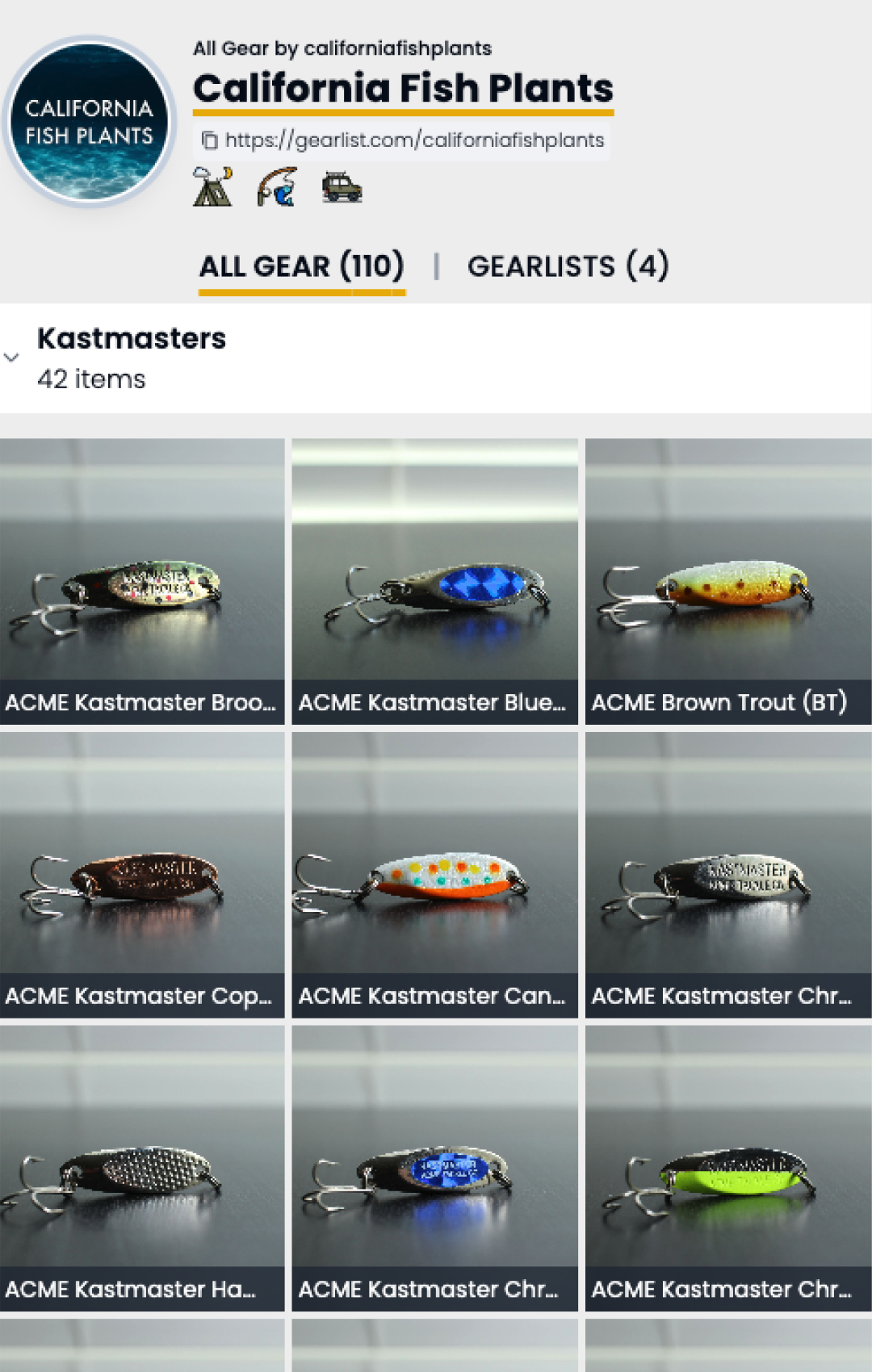Nestled in the foothills of the Sierra Nevada, Tuttle Creek stands as a hidden gem, offering a serene and unique fishing experience amidst meadows, granite cliffs, and historical charm. Explore this comprehensive guide to Tuttle Creek, revealing the diverse fish species that call it home, essential angling tips, and the historical allure that makes it a worthwhile destination.
📈 Latest Fish Plants
Fish here often?
How To Read Fish Plant Graphs
To interpret fish plant graphs effectively, consider the following key elements:
- Blue Vertical Bars and Numbers:
- Representation: The blue vertical bars on the graph represent individual fish plants.
- Weight Measurement: The associated numbers indicate the total weight of the plants in pounds (lbs.) that occurred during a specific week.
- Significance: Monitoring these bars helps identify weeks with higher planting activity, aiding anglers in selecting optimal times for fishing near recent plantings.
- Orange Trend Line:
- Purpose: The orange trend line represents the moving average of all fish plant activities at the specified location.
- Indicator of Activity: A rising trend line suggests a consistent increase in planting activity over the designated period. This indicates the potential for more catch opportunities and signifies a growing fish population over the weeks.
- Interpreting the Moving Average:
- Upward Trend: A rising moving average implies an upward trajectory in planting activity, indicating an increasing number of fish being introduced into the area. This suggests a positive outlook for anglers, as it implies a larger and potentially more accessible fish population.
- Downward Trend (Not Specified): The description does not provide information on the interpretation of a decreasing trend in the moving average. It might be beneficial to include information on what a decreasing trend could signify in terms of fishing prospects.
- No Data Present:
- Possible Explanations: If no data is visible on the graph, it may indicate that the location had no fish plants in the last three months. Alternatively, the absence of data could be due to non-disclosure of fish plants for that location.
- Natural Population: Some fishing areas in California rely on the natural growth of fish populations, and graphs may not show plants if this is the case.
- Graph Disclaimer:
- Data Source: The graphs reflect a combination of publicly disclosed data and estimates. Some locations may disclose fish plants without specifying exact amounts.
- Not Universal: Not all fishing areas have fish plants, and the natural growth of fish populations plays a significant role in many California fishing locations.
Understanding these elements will empower anglers to make informed decisions about when and where to fish based on historical fish plant data.
Note: If no data is present in the graph above, this location may not have had any plants the last 3 months, or may not have publicly disclosed plants. Graphs reflect both publicly disclosed data and estimates, as some locations disclose plants, but not exact amount.
🗺️ Map & Fishing Location
Types of Fish in Tuttle Creek
- Rainbow Trout:
- Description: The reigning champions of Tuttle Creek, these feisty rainbow trout readily take flies, lures, and bait near fallen logs and undercut banks. Their slower, deliberate fight makes them ideal for beginners and families.
- Largemouth Bass:
- Description: Inhabiting deeper sections and around structures like logs and rocks, these aggressive fish love crankbaits, jigs, and spinnerbaits. Anglers should be prepared for an exciting battle.
- Catfish:
- Description: Whiskered inhabitants of the depths, particularly near the dam. Nightcrawlers, stink baits, and cut bait on bottom rigs prove effective in tempting them out.
- Crappie:
- Description: Schooling fish that are a blast to catch on light tackle, especially in the spring and fall near weed beds and brush piles. Minnows, jigs, and crappie tubes are effective baits.
Local Insights for Successful Angling
- Early Mornings and Evenings:
- Tip: The fish come alive during low-light periods, making early mornings and evenings ideal for angling. Pack a headlamp to extend your fishing hours or enjoy the sunrise over the picturesque mountains.
- Match the Hatch, Be Adaptable:
- Tip: While insects like caddisflies and mayflies are key, don’t hesitate to experiment with different fly patterns and lures based on water conditions and fish behavior.
- Wildlife Watching:
- Tip: Tuttle Creek teems with deer, birds, and occasional bobcats. Respect their space and relish the opportunity to witness the diverse wildlife in the area.
- Respect the History:
- Tip: Tuttle Creek was once a bustling mining town, and remnants of cabins and mining equipment dot the area. Immerse yourself in the historical charm while fishing.
Unique Aspects of Tuttle Creek
- Family-Friendly Atmosphere:
- Tip: Tuttle Creek’s gentle banks, calm waters, and diverse fish species create a perfect setting for introducing kids to fishing or enjoying a relaxing family outing.
- Scenic Backdrop:
- Tip: Cast your line amidst towering pines, meadows bursting with wildflowers, and granite cliffs reflecting in the water. Tuttle Creek provides a feast for both the eyes and the soul.
- Historical Charm:
- Tip: Remnants of the old mining town add a unique character to the area, inviting anglers to imagine the stories these rocks could tell.
Specific Fishing Locations
- Near the Campground:
- Tip: Cast from the bridge or wade upstream for easy access and plenty of rainbow trout action.
- The Meadows:
- Tip: Seek deeper pools near fallen logs and overhanging vegetation for potential encounters with larger bass and catfish.
- The Dam Area:
- Tip: Try your luck for hungry trout below the dam, especially during fish releases. This is also a prime spot for crappie when they’re schooling.
- The Inlet of the Tule River:
- Tip: Fish near the confluence or follow the river upstream for a chance at wild trout and maybe even a smallmouth bass.
Always check the latest California fishing regulations, obtain necessary licenses, and stay informed about water flow levels and weather conditions. Tuttle Creek, while not the most challenging fishing spot, stands as a gem—a place to connect with nature, create memories, and appreciate the simple joy of casting a line. So, grab your rod, pack a picnic basket, and immerse yourself in the enchanting rustic magic of Tuttle Creek.



